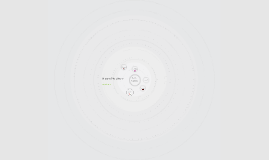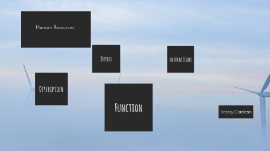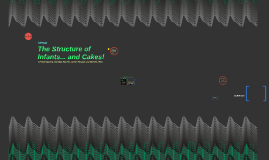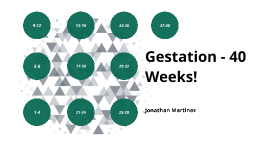Fetus Fetus
Transcript: Gestation - 40 Weeks! Jonathan Martinez WebdMD: https://www.webmd.com/baby/guide/default.htm Kaiser Permanente: https://healthy.kaiserpermanente.org/health-wellness/maternity EHD: https://www.ehd.org/prenatal-images-index.php Weeks 1-4 1-4 The sperm and the egg unite together to create a fertilized egg. Once together, it travels to the uterus, where the baby will grow, and implants itself onto the walls. By 4 weeks, organs like the brain, eyes, heart, and lungs are developing! The placenta forms around 10 days after fertilization. The mother will not feel any different than normal. Any symptoms will feel like she is on her period. Pregnancy tests can be used to see if the mother is pregnant. (WebMD) (Kaiser Permanente) (Cleveland Clinic) (EHD) Weeks 5-8 5-8 The baby will begin forming limbs and other organs like the intestines, brain, and eyes. The heart will begin to beat. The baby will be the size of a grain of rice. The mother will begin to feel different. Hormone changes will cause the woman to feel moody. The mother will feel a lot more sick than usual. At this point, the mother should visit the doctor to check on her baby. (WebMD) (Kaiser Permanente) (EHD) Weeks 9-12 9-12 The baby is growing much faster, reaching the size of a garlic bulb. The baby is now recognizable. Organs like the intestines and the genitals are developing. Mothers will begin to feel more tired, as well as beginning to gain weight. The uterus is expanding as well. Hormone changes cause the mothers to take in more nutrients. (WebMD) (EHD) Weeks 13-16 13-16 The baby can move! Its bones are becoming harder, it can move its eyes, its heart can be heard at the doctor's office, and is now the size of a carrot! The mother can now feel the baby inside of them. They may even show a bump! Vessels in the face or legs can become visible. Mothers should visit the doctor's office if they become a problem. Or even to hear the heartbeat of the baby! (WebMD) (Kaiser Permanente) (EHD) Weeks 17-20 17-20 The baby reaches papaya length! It can now hear sounds and is more mobile, moving around more. Fat begins to form and the baby's skin is clear! The mother has now gained 33% of their pregnancy weight and will have increased their blood volume by 70%. The thyroid gland is more active, causing the mother to sweat more. At this point, the gender of the baby is now able to be determined! (WebMD) (Kaiser Permanente) (EHD) Weeks 21-24 21-24 The baby is ~12 inches long! The baby's sex organs have formed by the 24th week; the baby can now hiccup; the skin is loose as muscle forms to fill it in; and white blood cells are being made! The mother is showing more and more and their bump is usually above the belly button. Hormones are making the joints soft as the body prepares for birth. Hormones are also increasing body temperature. (WebMD) (Kaiser Premanente) (EHD) Weeks 25-28 25-28 The third trimester! The baby's organs are close to being fully developed. By Week 28, it will be `10 inches long from head to the rump. It should also be getting into position for birth - head first. Visits to their ob-gyn will be more frequent. Prenatal vitamins are recommended to ensure the baby and mother receive all necessary vitamins. Shortness of breath is common as the uterus presses on the diaphragm, crowding on the lungs. (WebMD) (Kaiser Permanente) (EHD) Weeks 29-32 29-32 The baby is preparing for birth. All organs should be developed apart from the lungs. All 5 senses should also be working (the baby can cry!). It should weigh 4 pounds and be 18 inches in length, gaining 1/2 pounds a week. The mother should begin lactation around this time. The joints will also soften as the body prepares for labor. They will have gained 21-27 lbs by week 31 and may still gain 1 lb a week. (WebMD) (Kaiser Permanente) Weeks 33-36 33-36 The baby has developed the most within these weeks than in any other! The brain is almost fuly developed; the baby can control its body temperature, can blink, and can yawn! It reaches 20 inches and should not grow more than that, but it will gain half a pound a week until birth. The mother has gained 24-27 lbs by week 35. The uterus has expanded to reach the ribs by week 36 and makes walking uncomfortable. Contractions known as Braxton Hicks ccontractions will occur. This is just to prepare the mother for birth. The mother should schedule a doctors visit weekly to test for bacteria. (WebMD) (Kaiser Permanente) (EHD) Weeks 37-40 37-40 The baby should be almost fully developed. The skin becomes pinker, toenails grow, and has fallen into the pe making it easier for the mother to walk.The baby should weigh around 7.5 lbs, the weight of a watermelon. The mother has reached their maximum weight, between 25-35 lbs. Pressure on the bladder by the uterus can cause more urination. The uterus has expanded from 2 ounces to 2.5 lbs, a vast difference. (WebdMD) (Kaiser Permanente) (EHD)

















